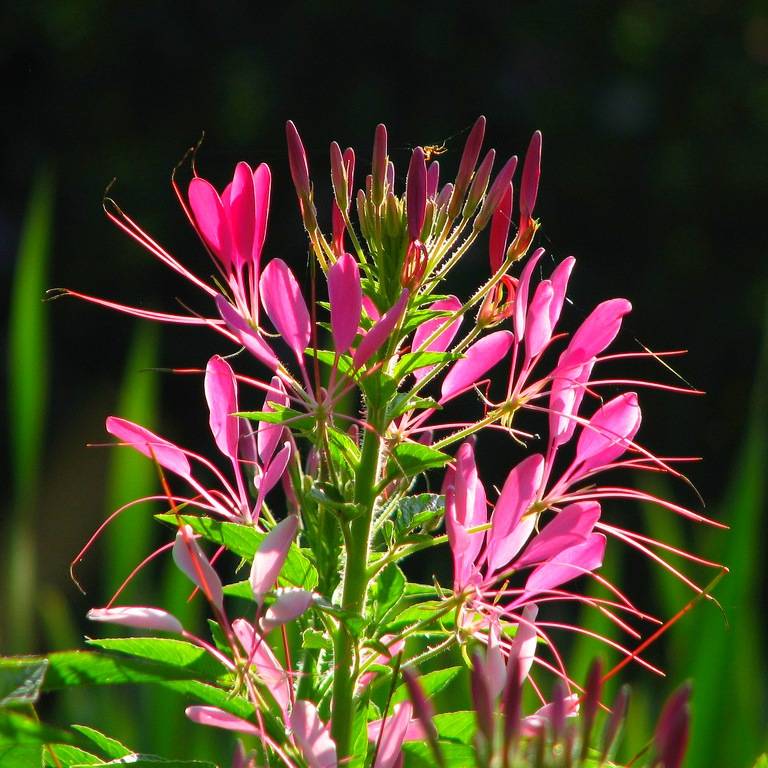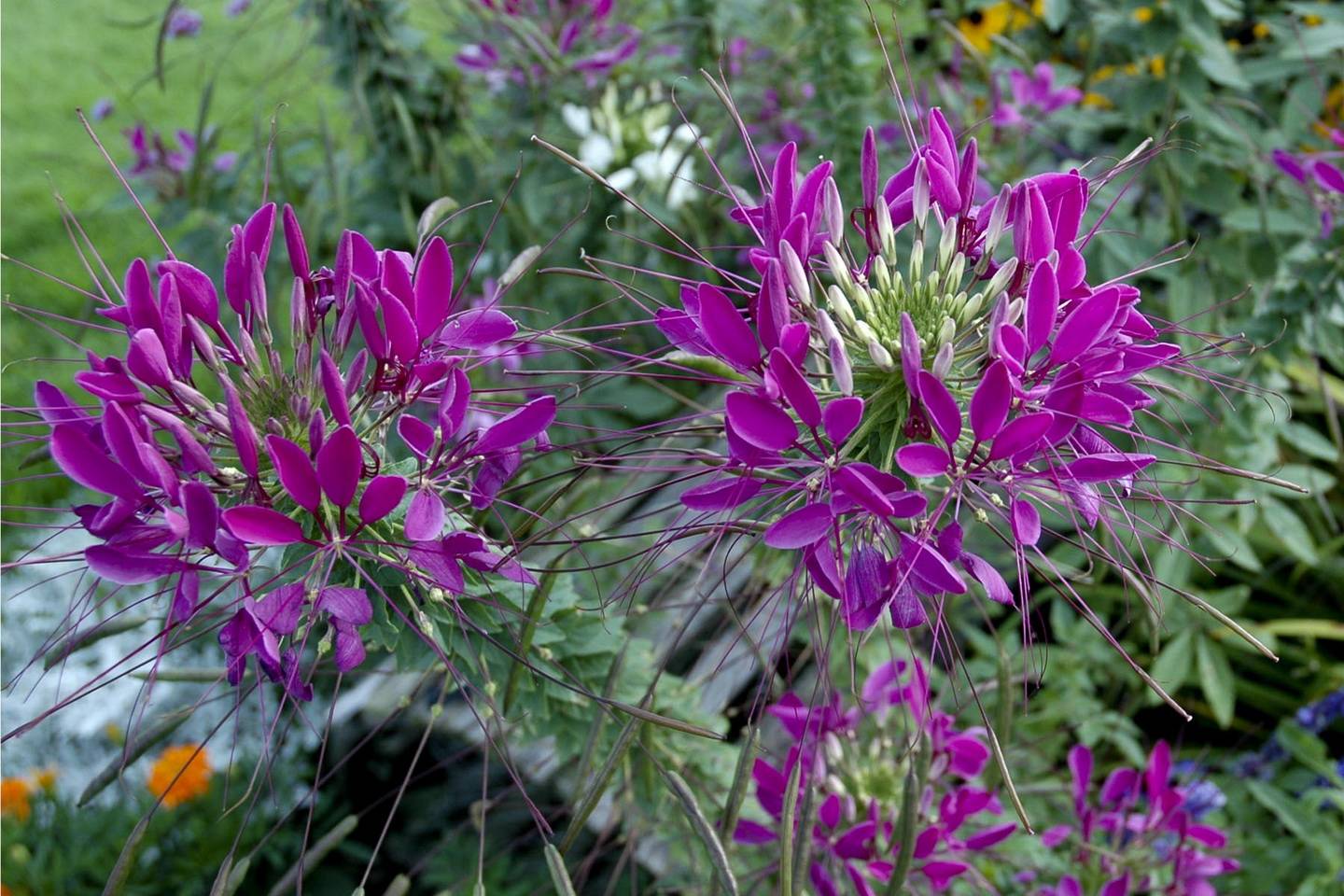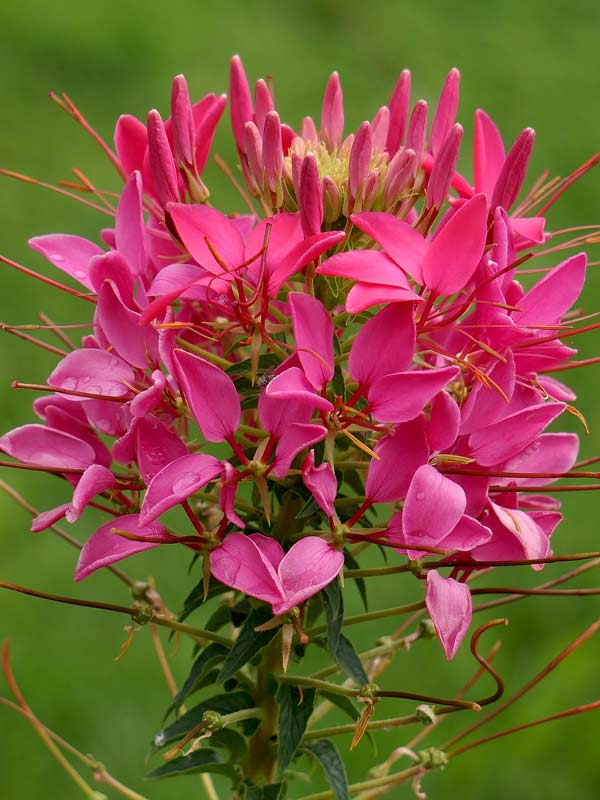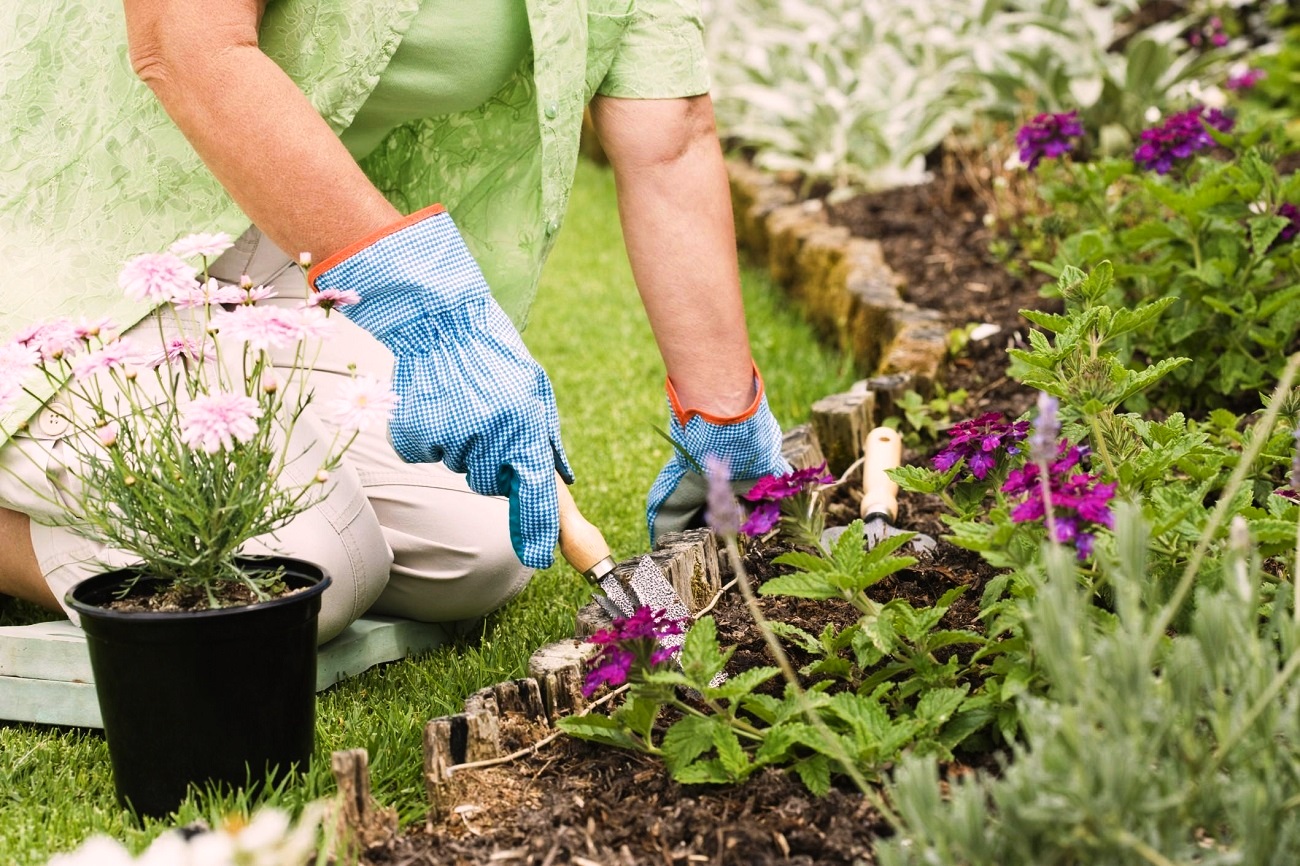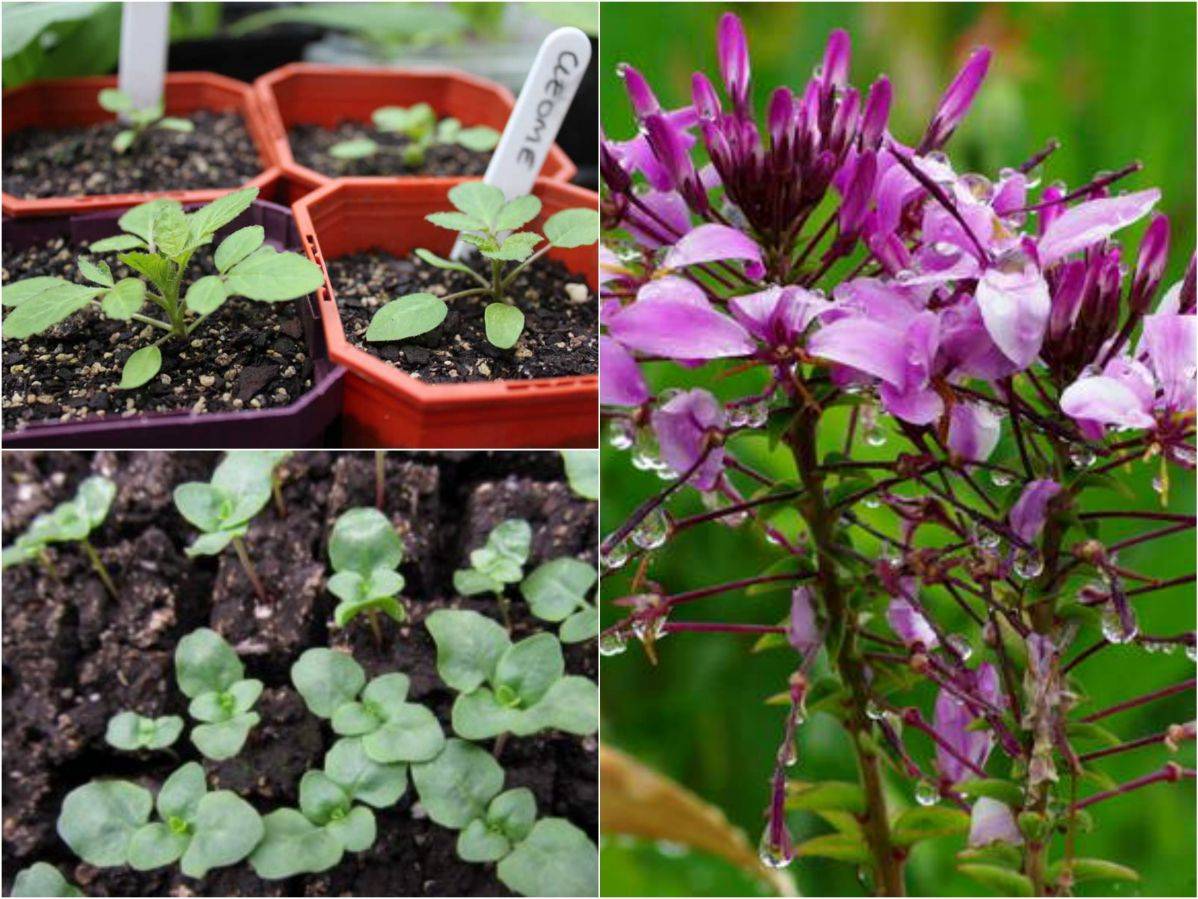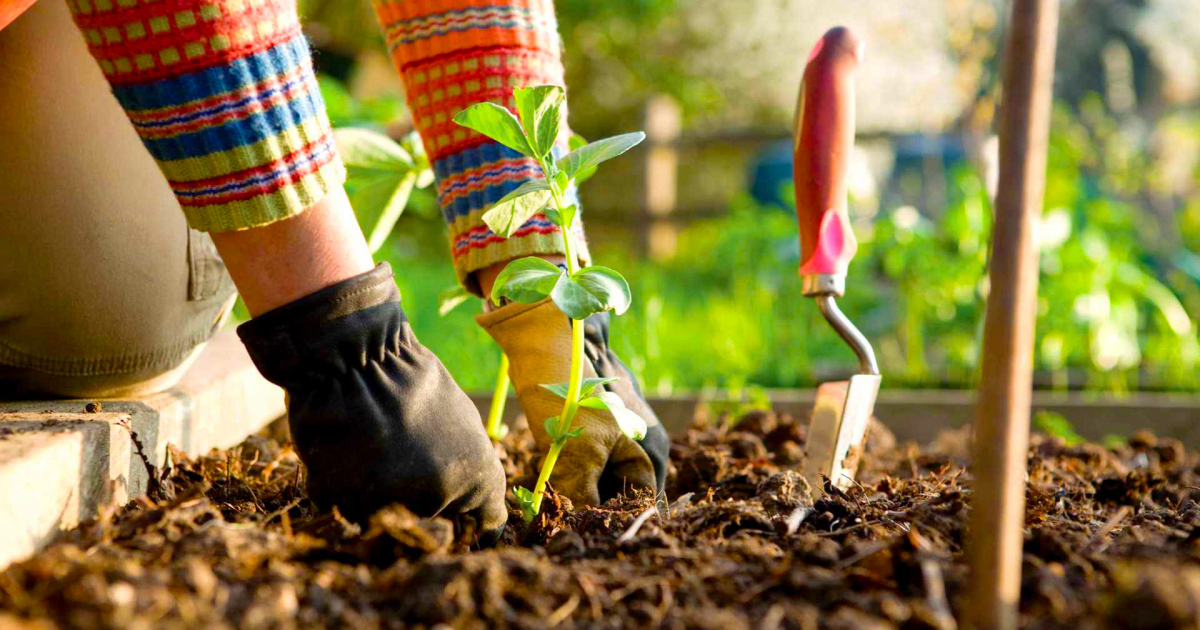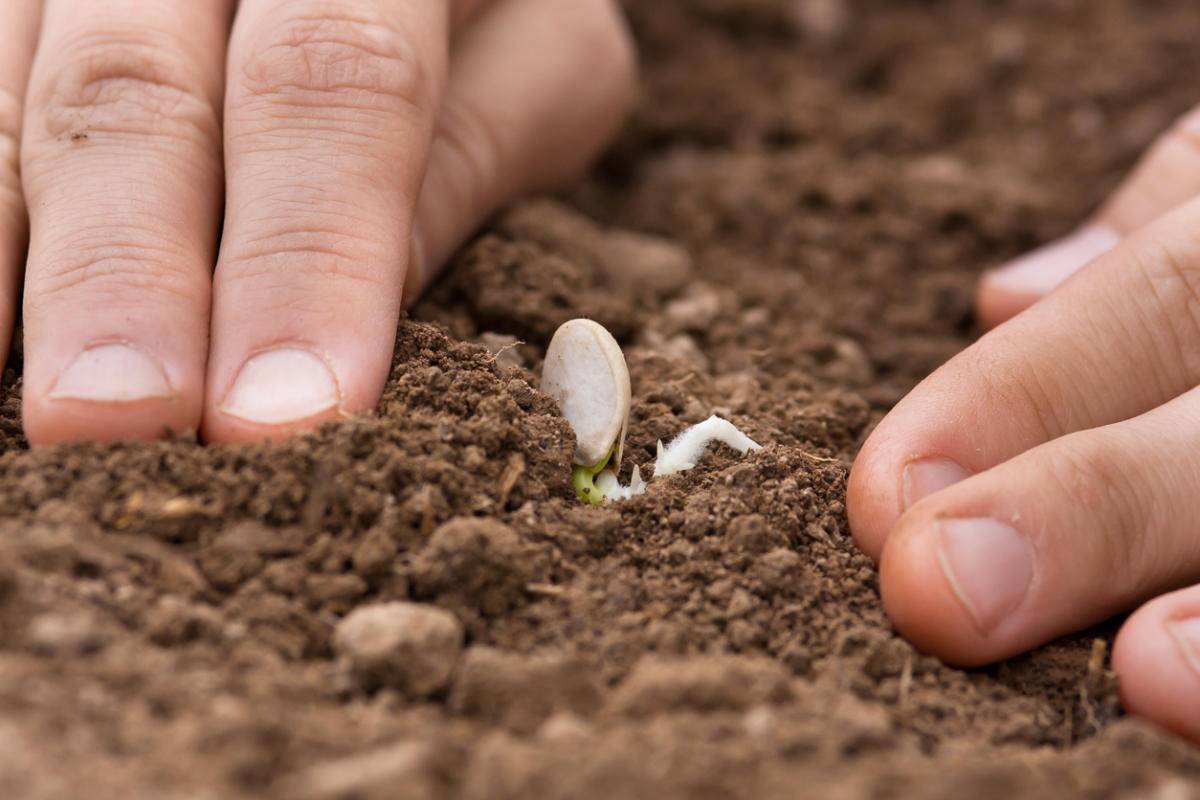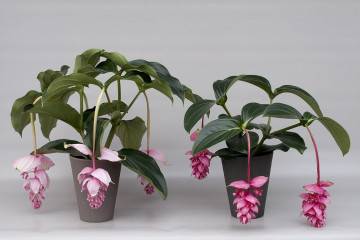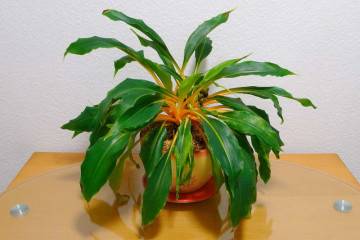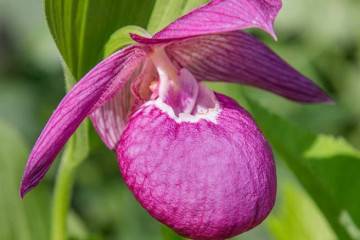Cleoma flower - description of perennial species of prickly and Hessler
Content:
Cleoma is a flower from the genus of annual and biennial plants of the Cleomaceae family. It grows in temperate and warm regions, usually found in meadows and forest edges. How to grow glue at home, what varieties and varieties it has, will be discussed in this article.
Features of cleoma
Cleoma in the garden will become a real decoration, refresh any landscape design, complement the most daring decision. This is because the plant has the following botanical description and features:
- Cleoma flowers have a regular symmetrical outline. They are composed of small petals of white, yellow, purple or pink flowers and their shades;
- the leaves have a simple, elongated linear shape and are arranged in the next order;
- branched stems, drooping;
- fruits are formed in the form of bolls 2-4 cm in size, seeds are located inside.
Cleoma is also called a semi-shrub plant, since several stems covered with flowers grow on one bush. It is often used when decorating a hedge or to decorate a local area.
Color classification
Cleoma has two main varieties, but there are many more varieties. To date, botanists have more than 250 varieties. There are two types of glue on sale:
- cleoma Hassler;
- prickly cleoma.
They grow mainly in the countries of South America, and for the territory of Russia, separate varieties have been created that can adapt to environmental conditions, guaranteeing long flowering. These include:
| View | Varieties |
| Hassler | Splash of Champagne, Kelly Rose. |
| Prickly | Cherry Queen, Hellen Campbell, Rosakenigin, Pink Rose, Queen Rose, Violet Queen, Golden Sparkler, Giant Pink Kewsen, Sparkler Lavander. |
Some varieties and species are considered in more detail below.
Cleome Hassleriana
Cleoma of this species was brought to Russia, as already mentioned, from the countries of South Africa: Argentina, Paraguay and the eastern part of Brazil. It is an annual plant up to a meter in height with unique decorative characteristics. It has wide, spreading leaves of a rich green-emerald hue and lush inflorescences from delicate pastel to rich and bright shades of pink, lilac, purple. The flowering period ends with the ripening of the seed pods.
Cleome Spinosa
Cleoma prickly is widely known among gardeners for its interesting, bizarre flowers. During the flowering period, they open, and the petals become long and thin, like spider legs, therefore there is another name among the people - the spider flower.
In addition, this type is considered the largest among the glue, its height often passes the 1 m mark.
Varieties that are very popular with gardeners
In most cases, cleoma is a perennial flower, but it does not tolerate cold weather, strong winds and a lack of sunlight, so it is planted for the season.
In more detail about the main varieties that are popular among gardeners:
| Variety | Color | Features of the |
| Cherry Queen | Deep pink | Differs in beautiful lush buds, consisting of many small flowers. The color is largely determined by the variety, but even on the same bush, different shades can be found. |
| Cleoma Champagne Splash | White with a slight yellowish-golden sheen | It looks like a very delicate, romantic plant. This feeling is created by a unique shade that is not found in other tones. |
| Hellen Campbell | White | White cleoma is quite rare in Russian latitudes, since this variety is quite whimsical, it does not adapt well to climate conditions. |
| Rozakenigin | Light pink | Rozakenigin, on the contrary, easily gets used to environmental conditions, can grow even with a lack of moisture and sunlight. |
| Pink Queen and Rose Queen | Various tones of pink and golden yellow | These varieties are most often used when creating landscape compositions. Flowers not only look attractive, but also easily get along with other plants. |
| Golden Sparkler | Yellowish | Refers to dwarf varieties. The bushes, although small in size, are strewn with flowers, due to which they are incredibly attractive and widespread. |
| Giant Pink Qusen | Dark pink, purple | The largest among the varieties. Under favorable conditions, the bush can reach a height of 1.5 m. Moreover, the flowers, like the plant itself, are quite large. |
| Sparkler lavender | Pale purple | This variety got its name because of the similarity in appearance with lavender. The delicate shade of the buds looks good, it can fit into any idea for decorating a local area. |
| Violet Queen | Dark violet | Most often, the variety is used for the construction of small hedges. For example, to separate areas of the garden. Flowers are able to grow densely, occupy all the space. |
Growing features
To grow a healthy, beautiful plant that will please the eye all season, decorate the territory of the garden or house area, it is important to strictly follow the instructions, follow the principles of cultivation, which include:
- growing seedlings;
- soil preparation and site for planting;
- feeding bushes;
- regular watering and weeding;
- measures to combat diseases and pests;
- collection of seeds;
- cleaning or preparation for wintering.
For cleoma to grow well, planting and care must be correct. Therefore, each item should be considered in more detail.
Soil preparation and landing sites
For cleoma, planting and grooming outdoors is a real challenge. Although the plant is unpretentious, it is difficult to take root in the soil. That is why, before disembarking, it is necessary to prepare the place and soil:
- Soil preparation begins a few weeks before sowing - in late April-early May.
- For planting, choose a well-lit place away from water drains and drainage pipes, since the cleoma plant does not like stagnant moisture.
- The soil must be dug up, weeds must be removed and a natural bait added to it - compost.You can also use complex fertilizers in low concentrations.
The nuances of growing seedlings
There are the following nuances:
- sowing seeds for seedlings must be started in March, from about the middle;
- for seedlings, containers with a depth of about 15 cm are needed, since the sprouts have a rather extensive root system;
- as a soil, I use a substrate consisting of soil, sand and compost in equal proportions.
The first shoots will appear in 10-15 days. During this period, they need special care: abundant watering, sufficient sunlight and feeding.
Sowing seeds in the garden
Usually glue is grown in a vegetative or seedling way. But they are quite long and require additional efforts from gardeners. Therefore, some gardeners prefer to plant seeds in the garden. The plant will be just as big and beautiful, but flowering will come later.
So, one way to propagate a cleoma flower is growing from seeds, when to plant them so that they sprout? As soon as the ground thaws, the spring frosts will pass. This is at least mid-April.
Flower care
For cleoma, planting and grooming are the two main factors affecting development and growth. The plant must be looked after not only in the period after planting, but also throughout its life. Especially carefully at the time of flowering.
Top dressing of bushes
Top dressing should be done in stages:
- for the first time in preparation for disembarkation. To do this, use compost or complex fertilizer;
- the next stage is after the first buds appear. To prolong flowering, mixtures based on nitrogen-containing substances can be added to the soil;
- the final stage is during the flowering period. At this time, mixtures based on potassium and phosphorus are introduced into the soil.
In addition, general-purpose fertilizers can be applied at intervals of two weeks. This is especially important for sluggish, weakened glue.
List of summer treatments
The main summer procedure is watering. It should be abundant. At the same time, it is important that water does not stand on the beds, cleomes react badly to this. Therefore, the rule is simple - water until wet, when there is no water on the surface of the soil.
The next steps are loosening and removing weeds. This should be done regularly, after each watering, since the plant needs the maximum amount of mineral and nutrients, oxygen.
Cleoma after flowering
Questions about how to care for a plant, how cleoma blooms were discussed. What to do after this period ends? Collect seed pods and prepare the plant for the winter period.
Seed collection
The seeds are stored inside the fruit pods. If they are properly collected, stored, then they can be planted next year in open ground or for seedlings.
You can understand that the seeds are ripe by their color: they turn yellow or yellow-brown. In addition, it is advisable not to allow them to spill during collection, since they can remain in the soil throughout the winter and sprout up on their own in the spring.
Wintering
Usually the plant is dug up in late autumn, and a new one is planted in the spring. Cleoma does not tolerate frost well, because she is used to warm, hot climate. Even warming with a film and special materials will not save the plant from death, since the soil, and with it the root system, freezes very much.
Reasons for non-germination of seeds
The main reason for the lack of germination of seeds, especially when using last year's planting material, is improper storage. After collecting, the grains are dried and placed in ventilated fabric bags and stored in a dark, protected from moisture and light, place.
Another reason is the lack of nutrients in the soil. That is why it is necessary to properly prepare the place before planting.
And the last reason is excessive moisture, as a result of which the seed can simply rot.
Dangerous diseases and pests
As already mentioned, the flower has an unusual, specific aroma that repels pests and insects. And diseases in cleoma are rare, usually they are caused by improper care, moisture stagnation or lack of sunlight.
You can understand that the plant is sick by the following signs:
- discoloration of foliage;
- the appearance of spots of various colors or small holes on greenery;
- the appearance of a white bloom;
- curling leaves or petals;
- late flowering.
In the fight against diseases and pests, various medicines that are sold in botanical stores will help.
Thus, cleoma is a unique plant that can become a real decoration of the garden. The main thing is proper care, only then the flower will delight the eye all season.
